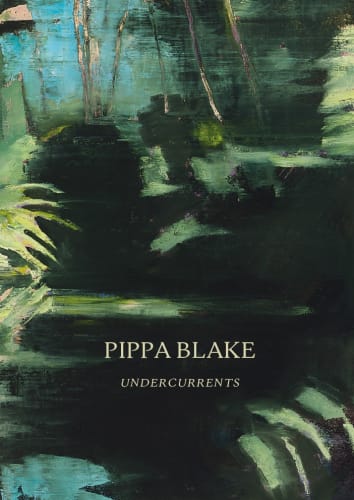In Undercurrents, painter Pippa Blake presents a new body of work exploring the calming serenity and hidden dangers of creeks, streams, and rivers. Born from the centrality of voyaging by sea, land, and air to the artist’s life and career, this collection of paintings looks at waterways as routes of travel for humans, non-humans, and elemental forces alike. Many of the works in Undercurrents quietly touch on the sinister side of nature, creating a subtle tension between the beautiful and the unknown encapsulated in the reflective surfaces of apparently tranquil water.
The exhibition employs dual geographies to express both the fluid interconnectivity of all bodies of water and the specific conditions of local ecosystems which are affected in unique ways by the polluting actions of human beings. The places depicted in the paintings are located across the UK and New Zealand, spanning two opposite sides of the world. A small, rare, and increasingly threatened chalk stream local to Blake’s English south coast home provides a poignant counterpoint to a creek in rural New Zealand, first shown to Blake via photographs by her daughter on a long-distance phone call during the coronavirus lockdown. Through her process of capturing a sense of place, Blake’s work also speaks to a soulfulness and melancholy that suggest a widespread human yearning for something beyond the ordinary.
Many of the works in Undercurrents reflect a career-long concern with dichotomies of order and chaos. Blake often begins by dividing a canvas into a grid, using perpendicular lines to instil an underlying sense of order in the work. When she starts to paint, however, she begins to stray from the grid’s compositional system, creating tensions between her freely expressive mark-making and the formal underlying structure.
Over the course of her career, Blake has taken an aesthetic journey through figuration and abstraction. Her current body of work continues the art historical tradition of landscape painting, while drawing on the gestures, formal elements, and use of colour developed through her abstract practice. Seeing painting as a collaboration between head, heart, and hand, Blake is continually drawn to the physical materiality of oil paint and compelled to experiment with its possibilities.
Essay by Anna Souter.

